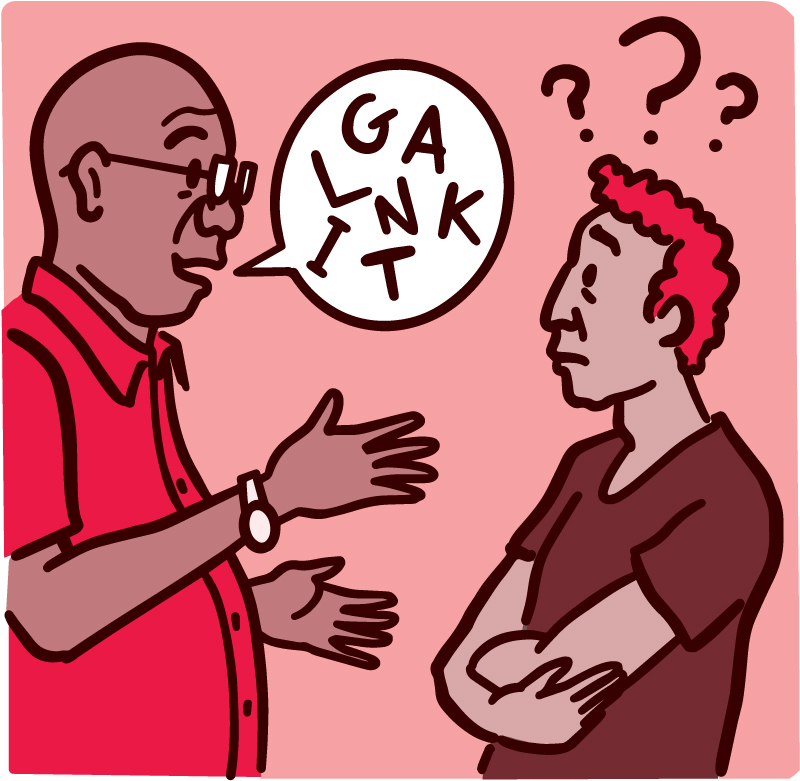People who are simple and live simpler lifestyles, or process the world more literally—such as neurodivergent individuals, children, and those with gentle temperaments—may find value in exploring the subtle, long-term effects of sarcasm on the subconscious. In environments where wit is prized, sarcasm can create emotional confusion, stress, or even erode trust. By understanding how sarcasm impacts emotional patterns, readers can set healthier boundaries, communicate more authentically, and protect their emotional well-being while still enjoying humor that uplifts rather than unsettles.
Part 1 — Sarcasm and the Subconscious: The Wit That Leaves a Mark
“Sarcasm often dresses as wit, but sometimes it leaves footprints in the heart.”
1. The Relatable Moment
Picture this:
A child runs up to you with a drawing of a lopsided cat. Their eyes shine with pride. You smile and say,
“Wow… that’s exactly how Michelangelo would have drawn it.”
The room laughs. The child laughs too — or at least, they think they should. But somewhere in the back of their mind, there’s a pause. Did you mean it? Was it good, or not?
This is the essence of sarcasm — the words say one thing, the tone means another. In many social circles, sarcasm is celebrated: it’s quick, clever, layered. Yet, beneath the surface, our brains — especially our subconscious — are wired to take words literally before we reinterpret them. That split second matters more than we think.

2. The Primitive Brain vs. The Sophisticated Joke
Humans have evolved sophisticated humor. We can twist language, imply meaning, and play with context. But the subconscious brain — the part that manages survival instincts, trust, and emotional memory — is still primitive.
Here’s the short version of the brain’s reaction to sarcasm:
Literal reception first — Words are heard, and their basic meaning hits the amygdala.
Emotional spark — The amygdala decides if this is safe or threatening.
Reframing by the cortex — Only afterwards does the thinking brain say, “Oh, this was a joke.”
For most people, this happens in milliseconds. But even in milliseconds, the first emotional echo can leave an imprint. For sensitive individuals — children, neurodivergent people, or those with gentle temperaments — the first emotional wave can linger far longer.
“Your mind laughs, but your heart may still be catching up.”
3. How the Mismatch Feels
Sarcasm isn’t just about words. It’s a mismatch between:
Language (what’s said)
Tone (how it’s said)
Body language (facial expression, posture, micro-expressions)
For sensitive people, this mismatch triggers a mini “emotional puzzle.” While they’re decoding, they may momentarily feel unsure, excluded, or even judged.

4. The Four Types of Sarcasm and Their Emotional Arcs
A. Negative-Then-Positive Arc (Relief-Based Sarcasm)
This type starts with a negative statement, then reveals itself as a joke.
Example:
Friend sees your messy kitchen and says, “Wow, this could totally be in a home magazine.”
At first: Shock, embarrassment, or guilt.
Then: Oh… they’re joking. Relief comes, maybe even laughter.
The problem: Relief-based humor creates positive feelings that are tangled with an initial stress spike. Over time, this dampens the purity of positive emotions. You’re laughing, but the laugh is flavored with past tension.
Pull-quote: “It’s like drinking sweet tea after biting into a lemon — the taste is never just sweet.”
B. Positive-Then-Negative Arc (Betrayal-Based Sarcasm)
This begins warmly but ends with a sting.
Example:
“Wow, that dress looks amazing… on someone else.”
At first: Warmth, feeling appreciated.
Then: Confusion, followed by a sting of disappointment or shame.
The problem: These moments wrap a negative message in a sugar coating. Socially, you’re expected to laugh along, which can mask the real discomfort.
C. Deadpan Sarcasm
Delivered with a straight face, no tonal cues, making it hard to detect.
Example:
“You must be so happy about missing the train.”
For neurodivergent individuals or literal thinkers, this can feel like genuine commentary, leading to unnecessary frustration or self-blame. Deadpan humor has the highest risk of misunderstanding in mixed company.
D. Self-Deprecating Sarcasm
Example:
“Me? Oh, I’m basically a disaster in human form.”
While often used to make others comfortable, repeated self-directed sarcasm can normalize self-dismissal — and for listeners, it can subtly model unhealthy self-talk. Children hearing parents do this may adopt similar language toward themselves.

5. The Science Behind the Sting
Amygdala Response
The amygdala reacts to threat perception. Sarcasm, especially if negative in tone, is first read as a mild social threat before being reinterpreted.
Mirror Neurons
We “mirror” the emotions we see and hear. A sarcastic tone often carries hints of cynicism or mockery, which listeners’ brains can internalize even if they later “get” the joke.
Emotional Layering
When sarcasm delivers both a negative and a positive emotional hit, the subconscious may store them together. Over time, this can blur emotional clarity, making genuine joy feel slightly “contaminated” by unease.
6. Why Sensitive Minds Feel It More
For:
Children: Still developing cognitive filters, take words more literally.
Neurodivergent individuals: May process tone and subtext differently, making sarcasm harder to detect or more exhausting to decode.
Highly empathetic personalities: Feel emotional undercurrents strongly; mismatches cause greater stress.
Simpler lifestyle individuals: Often value direct, straightforward communication, so sarcasm feels alien or disorienting.
Pull-quote: “Some people swim easily in the currents of sarcasm — others feel dragged under.”

7. The Slow Imprint
Repeated exposure to sarcasm can:
Increase baseline stress levels.
Reduce trust in verbal communication (“Do they really mean this?”).
Normalize teasing as the main mode of connection.
Lead the sensitive person to adopt sarcasm as a shield — often rooted in repression rather than genuine wit.
Example:
A teen who is regularly teased at home learns to use sarcasm back at school — not out of joy, but to avoid vulnerability.

Part 2 — Sarcasm and the Subconscious: Solutions, Social Context, and Safer Humor
8. Social and Cultural Factors
Sarcasm isn’t universal. In some cultures, it’s a main ingredient of everyday conversation. In others, it’s rare, or even considered rude.
In sarcasm-heavy cultures — certain Western workspaces, urban friend groups, or fast-talking creative industries — quick wit is a kind of social currency. Being able to volley sarcasm back is seen as a sign you belong.
But here’s the catch:
When the group values wit over clarity, those who think or feel more literally risk becoming outsiders.
The Hierarchy Factor
Sarcasm from someone in a position of authority — a parent, teacher, or boss — hits differently. Our brains are wired to give more weight to their words because authority figures influence survival and security.
Example: A teacher says to a struggling student, “Wow, you’re really aiming for that Nobel Prize, aren’t you?” The class laughs. The student smiles weakly but may carry embarrassment for weeks.

Digital Sarcasm
Text messages, emails, and social media strip away tone and facial cues. “Nice work” could be genuine praise or a sharp jab. Without voice inflection, the brain often defaults to caution, leaning toward a negative interpretation.
Pull-quote: “In person, sarcasm can sting. Online, it can slice twice as deep.”

9. When Sarcasm Works Safely
Sarcasm isn’t the villain — it’s the context and connection that matter.
It tends to work best when:
Both parties share a strong positive bond.
There is no ambiguity about mutual goodwill.
It avoids sore spots, insecurities, or past wounds.
Example: Two close friends, both secure in their bond, can toss sarcastic comments about each other’s coffee-making skills and laugh with no lingering discomfort.
But even here, a guiding principle helps: The closer your relationship, the more your words shape the other person’s self-image.

10. Coping Strategies for Those Who Struggle with Sarcasm
If sarcasm leaves you unsettled or confused, there are practical ways to protect your emotional well-being while staying socially connected.
A. Grow Emotional Resilience
Think of it as building an internal “filter” so you can catch sarcasm before it sticks.
Example: When someone says, “Nice driving,” after you hit a pothole, mentally note, “Sarcasm — not literal,” and let it pass.
B. Avoid Personalizing
Remind yourself that sarcasm often says more about the speaker’s habits than about your worth. Many people use sarcasm as their default humor because it’s culturally reinforced.
C. Preemptive Clarification
If unsure, ask with a smile, “Was that a joke?” This not only clears confusion but also subtly signals your preference for clear communication.
D. Minimize Sarcasm in Your Own Life
Model directness with those close to you. If you’re raising children, working with neurodivergent individuals, or caring for elderly relatives, humor that’s straightforward preserves emotional safety.
E. Balance Your Inputs
Seek spaces where humor is warm and literal — playing with pets, chatting with children, or engaging in hobbies with like-minded, supportive people.
Pull-quote: “You can’t control other people’s tone — but you can choose how much of it you let in.”

11. For Those Who Use Sarcasm: Preventing Misinterpretation
If sarcasm is your natural humor style, you can still use it without leaving emotional bruises.
A. Make It Playfully Obvious
Over-exaggerate so the intent is unmistakable: “Ah yes, I’m clearly a Michelin-star chef because I just burned toast.”
B. Never Target Known Vulnerabilities
If someone is insecure about their appearance, skills, or past mistakes, sarcasm in that area — even in jest — is more likely to wound.
C. Use the “Sarcasm Sandwich”
Wrap the tease in two genuine, positive statements.
Example: “You’re actually doing great — although I see you’re going for the ‘abstract’ look with that paint job — but honestly, I love how you’re experimenting.”
D. Employ Meta-Communication
In close groups, agree on boundaries: when sarcasm is okay, and when serious talk is needed.
E. Distinguish Sincerity from Sarcasm
Shift your tone, posture, and facial expression to match earnest words so no one mistakes your authenticity for mockery.
12. Drawing the Line Between Humor and Harm
Sarcasm’s biggest risk is that it becomes the default mode of connection. When every conversation is tinged with irony, authentic warmth can feel foreign.
A healthy balance means:
Humor that sometimes lifts without undercutting.
Praise that’s direct, not wrapped in a jab.
Teasing that strengthens bonds, not tests them.
Pull-quote: “Humor should add light to a room, not shadows.”

13. A Practical Experiment: The Sarcasm-Light Week
Try reducing sarcasm for seven days. Replace it with direct compliments, curiosity, or playful absurdity that’s clearly fictional.
Notice:
Does the mood in your home or workplace shift?
Do conversations feel warmer or more trusting?
Does your own stress level change?
Often, the results surprise people — humor doesn’t vanish; it simply becomes easier to receive.
14. Closing Reflections
Sarcasm can be delightful in the right setting, among people who trust each other deeply and can easily decode the cues. But for softer, simpler, or more literal minds, it can quietly leave dents in confidence, trust, and joy.
By becoming more aware of the emotional arc sarcasm creates — from the first primitive brain reaction to the conscious reframing — we can choose humor that connects without confusion.
In the end, the sharpest wit is one that leaves people lighter, not weighed down.
Final Pull-quote: “It’s not about banning sarcasm — it’s about making sure our humor leaves no scars.”
Support Meda Foundation
This article, like all others, has been made possible due to the support of patrons. If you have found it informative or useful, please consider donating. Additionally, share your knowledge and experiences via our feedback form.
Resources for Further Research
https://www.psychologytoday.com/articles (General psychology insights)
https://greatergood.berkeley.edu (Empathy, well-being, and social connection)
https://www.apa.org/topics/communication (Communication and relationship psychology)
https://www.ncbi.nlm.nih.gov/pmc/articles/PMC5539620/ (Scientific paper on sarcasm and cognition)
https://www.ted.com/talks (Talks on humor, empathy, and human behavior)
https://hbr.org/2015/05/the-surface-level-effects-and-deeper-meaning-of-sarcasm (Sarcasm in workplace communication)
https://brenebrown.com/podcast (Podcasts on vulnerability and trust)
https://www.youtube.com/user/SchoolOfLifeChannel (Videos on relationships, emotions, and personality)
https://www.themoth.org/podcast (Storytelling examples of human connection)
https://www.npr.org/sections/health/ (Human behavior, neuroscience, mental health)
https://danariely.com (Behavioral economics and social interaction insights)
https://ed.ted.com/lessons (Short educational videos on psychology and communication)
https://www.scientificamerican.com (Research-based articles on mind and brain)
https://www.verywellmind.com (Practical mental health advice)
https://www.psychologicalscience.org (Cutting-edge research papers)



















